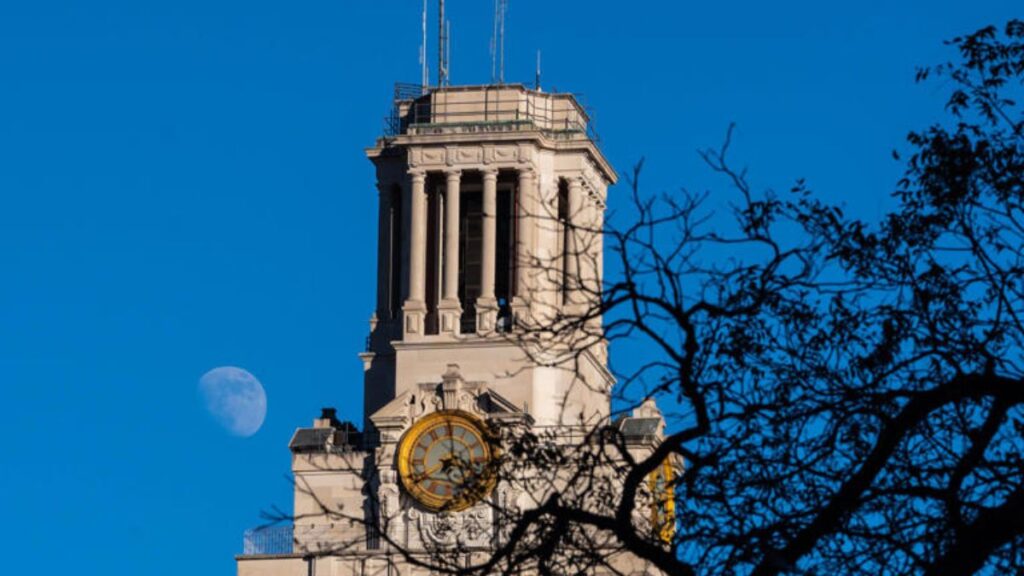Just one day into his role as interim president of The University of Texas at Austin (UT Austin), Jim Davis has made a bold move by appointing David Vanden Bout as the university’s new interim provost.
This decision sidelines Rachel Davis Mersey, who was named provost only seven weeks ago by outgoing president Jay Hartzell. As UT’s chief academic officer, the provost is a critical position, second only to the president, overseeing the university’s vast academic portfolio.
With this unexpected shuffle, what does it mean for UT Austin’s future? Let’s dive into the details of this leadership shakeup and its ripple effects.
A New Provost Takes the Helm
In his first email to the UT Austin community on Thursday, titled “The tasks before us, the power behind us,” Davis announced Vanden Bout’s appointment with confidence. “David has earned the trust of our faculty and deans over 27 years at UT Austin,” Davis wrote.
“His leadership and deep experience in science will enhance our teaching and research mission.” Vanden Bout, previously dean of the College of Natural Sciences, brings a wealth of expertise to the role. With over 11,000 students, 700 faculty, and $190 million in annual research funding under his belt, he’s no stranger to steering big academic ships.
Read Also:- The Decline of White-Collar Jobs: What It Means for Job Seekers and Employers in 2025
Mersey, whom Hartzell tapped as provost on January 6 after serving as interim since August, will assist with the transition, according to UT spokesperson Mike Rosen. However, her next steps remain unclear—will she return to her prior role as dean of the Moody College of Communication? Davis thanked her for her contributions but offered no hints about her future at UT.
Why the Sudden Change?
This isn’t just a routine handoff—it’s a signal of Davis’s intent to leave his mark. Hartzell, who announced in January he’d depart in June to lead Southern Methodist University, had set Mersey up as his academic successor.
Her tenure as provost followed Sharon Wood’s abrupt resignation in August, marking yet another shift in a year that saw eight major leadership changes at UT. Davis’s swift replacement of Mersey suggests a pivot in priorities, possibly driven by the UT System Board of Regents’ directive to boost operational efficiency.
Davis, a UT alum and former chief operating officer, lacks teaching experience—only the second president in UT history with that distinction. Yet, Chancellor James B. Milliken praised him as “the right leader” to propel UT’s mission forward.
In a brief chat with the American-Statesman, Davis emphasized connecting with students, faculty, and staff as his first step. “I want to engage with the people who drive the university’s mission,” he said, hinting at a hands-on approach to his interim tenure.
What’s at Stake for UT Austin?
The provost oversees everything academic at UT Austin—from research to curriculum to faculty affairs. Vanden Bout inherits a powerhouse in the College of Natural Sciences’ legacy, but he’ll need to navigate a university at a crossroads.

With Hartzell’s exit and Davis stepping in early, UT is juggling stability and ambition. The regents chose Davis to streamline operations, but swapping provosts so quickly raises questions about long-term strategy.
This move could reshape UT’s academic direction. Vanden Bout’s science-heavy background might tilt resources toward STEM fields, potentially impacting arts or humanities programs.
Meanwhile, Mersey’s brief stint leaves her vision—forged as a communication expert—on the shelf, at least for now. For a university known for its “unrivaled talent” and “tremendous strength,” as Davis put it, these leadership shifts test its resilience.
The Bigger Picture: Leadership in Flux
UT Austin’s whirlwind year of turnover isn’t unique—higher education is grappling with rapid change everywhere. But replacing a provost fresh off a permanent appointment is rare, even for an interim president.
It’s a bold flex of authority from Davis, who’s leaning on his operational chops and UT roots (his parents were a faculty member and a tech pioneer alum) to steer the ship. The stakes are high: UT’s $4.3 billion research enterprise and 51,000+ students hang in the balance.
For context, HP’s recent $166 million acquisition of AI startup Humane (covered earlier this month) shows how tech giants are snapping up talent to innovate. Could Davis’s shakeup be a similar play to reposition UT as an AI or tech research leader? Only time will tell.
Read Also:-
What Do You Think?
Will David Vanden Bout’s appointment as provost spark a new era for UT Austin, or is this just more turbulence in a stormy year? Should Davis have kept Mersey in place for continuity? Share your thoughts in the comments—we’d love to hear how you see this playing out! As UT Austin navigates this transition, stay tuned for more updates on how these changes shape one of America’s top universities.

